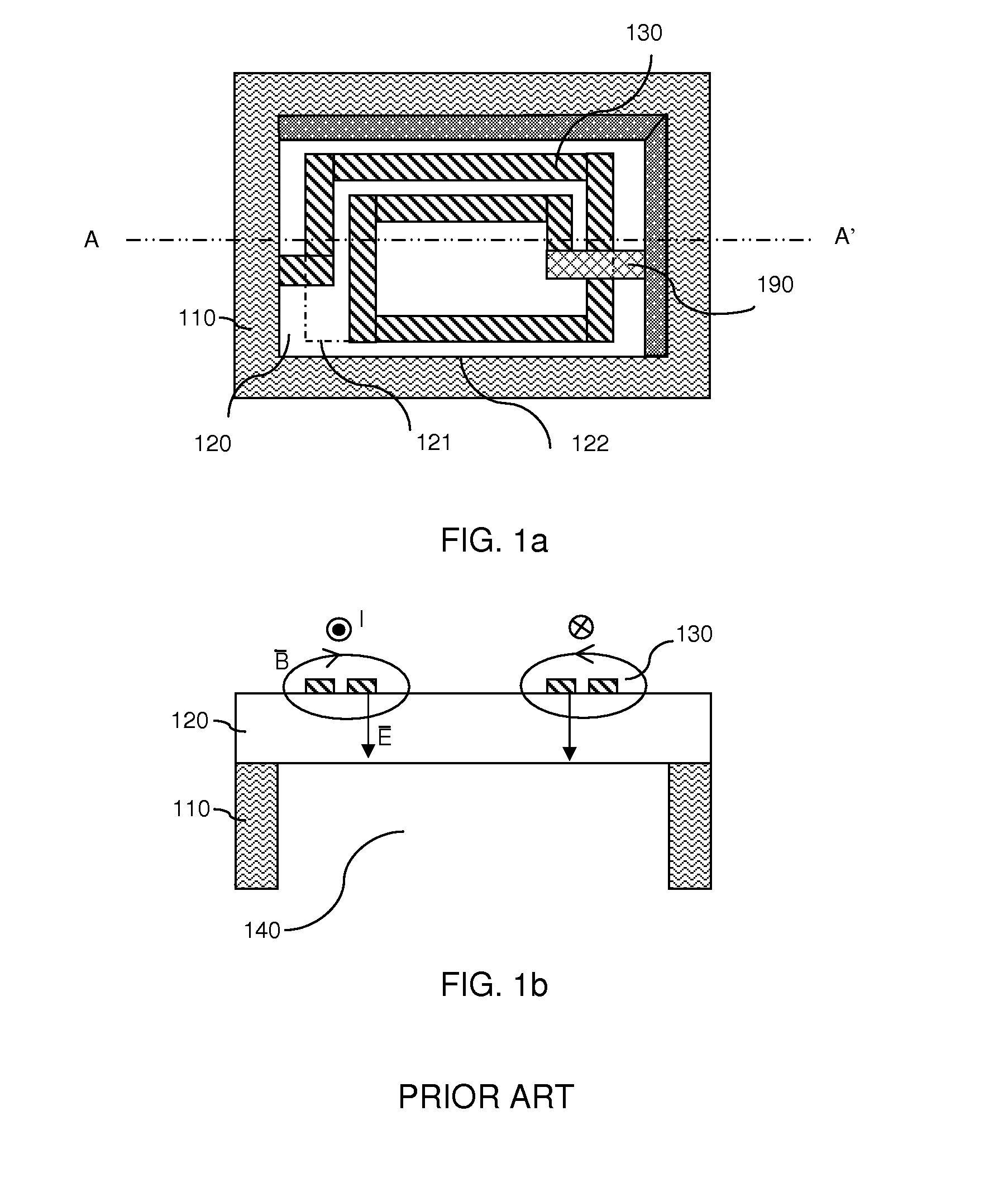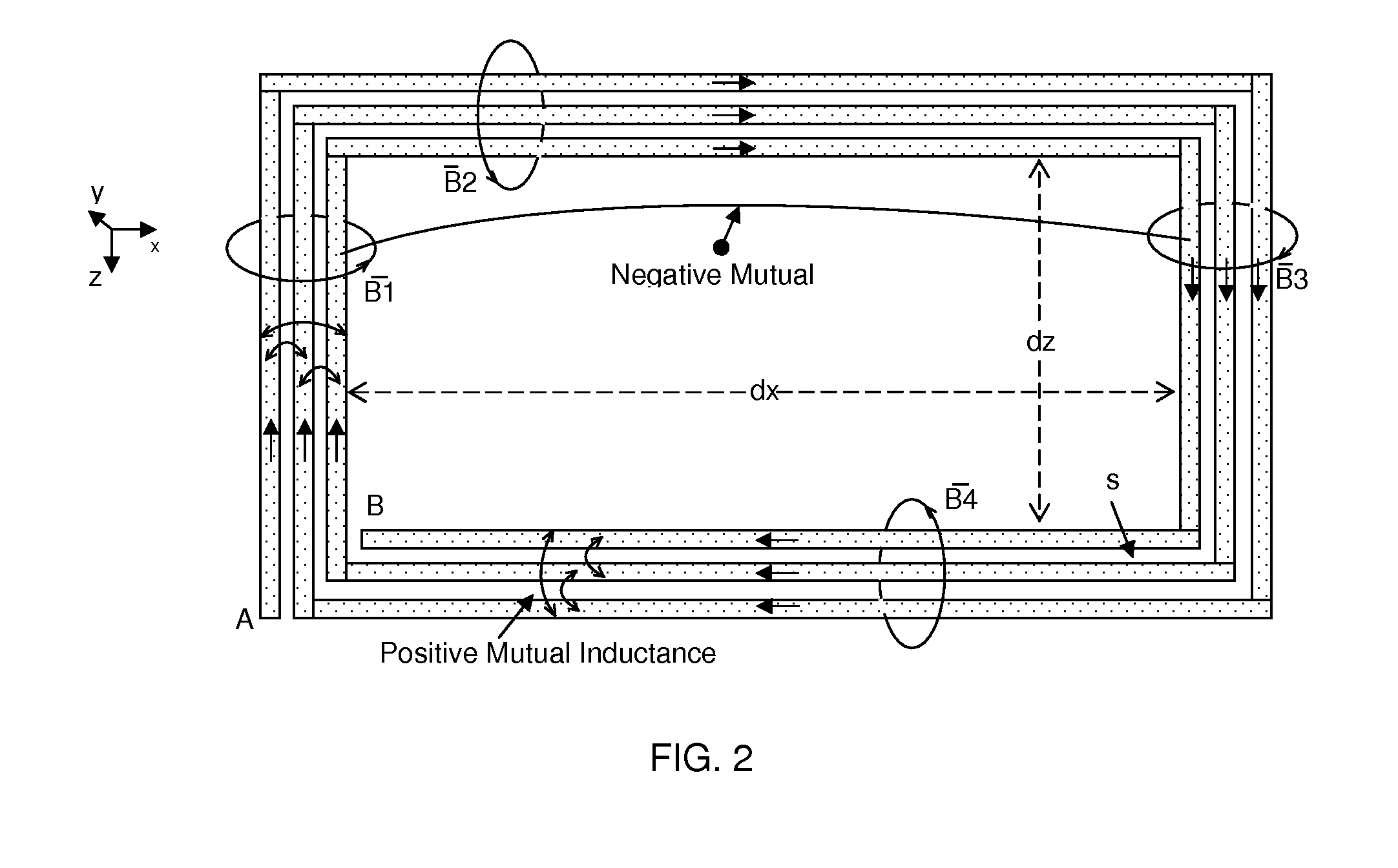On Chip Antenna And Method Of Manufacturing The Same
- Summary
- Abstract
- Description
- Claims
- Application Information
AI Technical Summary
Benefits of technology
Problems solved by technology
Method used
Image
Examples
Embodiment Construction
[0031]Referred now to FIGS. 1a and b, a prior art that used back side micro-machining to remove the silicon substrate, 110, under an inductor. The prior art belongs to Ozgur et al as mentioned in the background section. FIG. 1a is a bottom view of the inductor. FIG. 1b is a side view of the cross-sectional cut at A-A′ in FIG. 1a. An air-filled trench, 140, is formed under the inductor after the silicon is removed. It is important to point out that the area of the trench as defined by the boundary, 122, is larger than that of the inductor. The area of the inductor, 121, is defined by the boundary of outer edge of the outermost line of the inductor, 130. In another word, all the silicon inside the boundary 122 is removed. As the authors pointed out, for large inductor they encounter stress problem. To resolve this issue, the authors deposit a stress compensation layer on top of the inductor before doing the back side micromachining. They were able to build a 2 mm×3 mm suspended induct...
PUM
 Login to View More
Login to View More Abstract
Description
Claims
Application Information
 Login to View More
Login to View More - R&D
- Intellectual Property
- Life Sciences
- Materials
- Tech Scout
- Unparalleled Data Quality
- Higher Quality Content
- 60% Fewer Hallucinations
Browse by: Latest US Patents, China's latest patents, Technical Efficacy Thesaurus, Application Domain, Technology Topic, Popular Technical Reports.
© 2025 PatSnap. All rights reserved.Legal|Privacy policy|Modern Slavery Act Transparency Statement|Sitemap|About US| Contact US: help@patsnap.com



